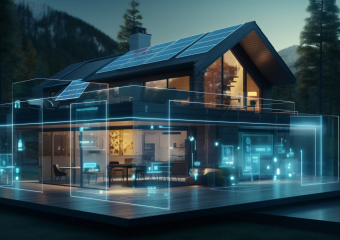Energy-Efficient Homes: Top Tips to Save Money & Planet
Living light in today’s context goes beyond just minimalistic living; it encapsulates a broader theme of energy efficiency that benefits both our wallets and the world. Homeowners and builders alike are increasingly drawn to the concept of energy-efficient homes, understanding that designing homes to be more energy-conscious is a step towards sustainable living. This not only results in reduced utility bills but also in a smaller carbon footprint, aiding in the fight against global climate change.
Why Energy-efficient Homes Are the Future
Energy-efficient homes are designed to utilize resources such as water, energy, and building materials more efficiently, while also reducing impacts on health and the environment. These homes are outfitted with technologies and constructed with materials that enhance sustainability through reduced energy consumption and environmentally friendly practices. This shift towards energy-efficient building is not just a trend but a necessary transition to combat the ongoing effects of global warming.
The Core Features of Energy-Efficient Homes
Building an energy-efficient home involves several key features and practices that contribute to its effectiveness in saving energy and reducing costs. Here are some critical aspects:
-
Improved Insulation: Well-insulated homes can retain heat during winters and keep cool in summers, drastically reducing the need for heating and cooling. This is often achieved using high-quality, sustainable insulation materials that have a high R-value.
-
Energy-efficient Windows: Double or triple-glazed windows with enhanced framing materials and protective coatings can minimize heat loss and gain, further contributing to energy conservation.
-
Solar Power Integration: Incorporating solar panels or solar shingles to utilize renewable energy can significantly decrease dependence on fossil fuels and reduce electricity bills.
-
Efficient HVAC Systems: Energy-efficient homes often include upgraded HVAC systems that require less energy to heat and cool the house, ensuring efficient temperature control with minimal energy expenditure.
-
LED Lighting: Replacing traditional incandescent light bulbs with LED lights, which use at least 75% less energy and last 25 times longer, is a straightforward yet effective measure.
-
Smart Home Technologies: Automated systems and smart devices like thermostats, lights, and appliances that adjust based on usage and necessity can dramatically enhance energy savings.
Benefits of Living in Energy-efficient Homes
Aside from the obvious environmental benefits of living in an energy-efficient home, there are numerous other advantages:
-
Reduced Utility Bills: Energy-efficient homes consume less power and water, which translates directly into lower monthly utility bills.
-
Increased Comfort: Such homes maintain more consistent temperatures, thanks to better insulation and controlled air leakages, resulting in a more comfortable living environment.
-
Higher Property Value: As more people recognize the benefits of energy-efficient living, the demand for such homes increases, boosting their market value.
-
Healthier Living Space: Reduced usage of toxic materials and better air quality due to improved ventilation systems contribute to a healthier living environment.
-
Community and Economic Benefits: Reduced energy demands can help to stabilize electricity prices and availability, lessening the overall strain on local power grids.
How To Transition To An Energy-efficient Home
For those considering making their existing home energy-efficient or building a new one, here are some steps to consider:
-
Energy Audit: Conduct a home energy audit to identify areas that need improvement. Many utility companies offer this service for free or at a low cost.
-
Upgrades and Replacements: Implement the upgrades identified during the energy audit—this could range from adding insulation to installing an energy-efficient water heater.
-
Seek Professional Advice: Employ the services of professionals who specialize in energy-efficient building and renovating. They can provide valuable insights and help manage more complex projects.
-
Look for Rebates and Incentives: Many governments offer rebates, incentives, and tax breaks for energy-efficient home improvements and technologies, reducing the initial cost burden.
Transitioning to an energy-efficient home is not just a financial and environmental need but also a lifestyle change that fosters a sustainable future. While the upfront costs can be significant, the long-term savings and positive environmental impact offer compelling reasons for taking this route. By living light, homeowners can enjoy a modern, cost-effective, and environmentally conscious lifestyle that doesn’t sacrifice comfort or style.







